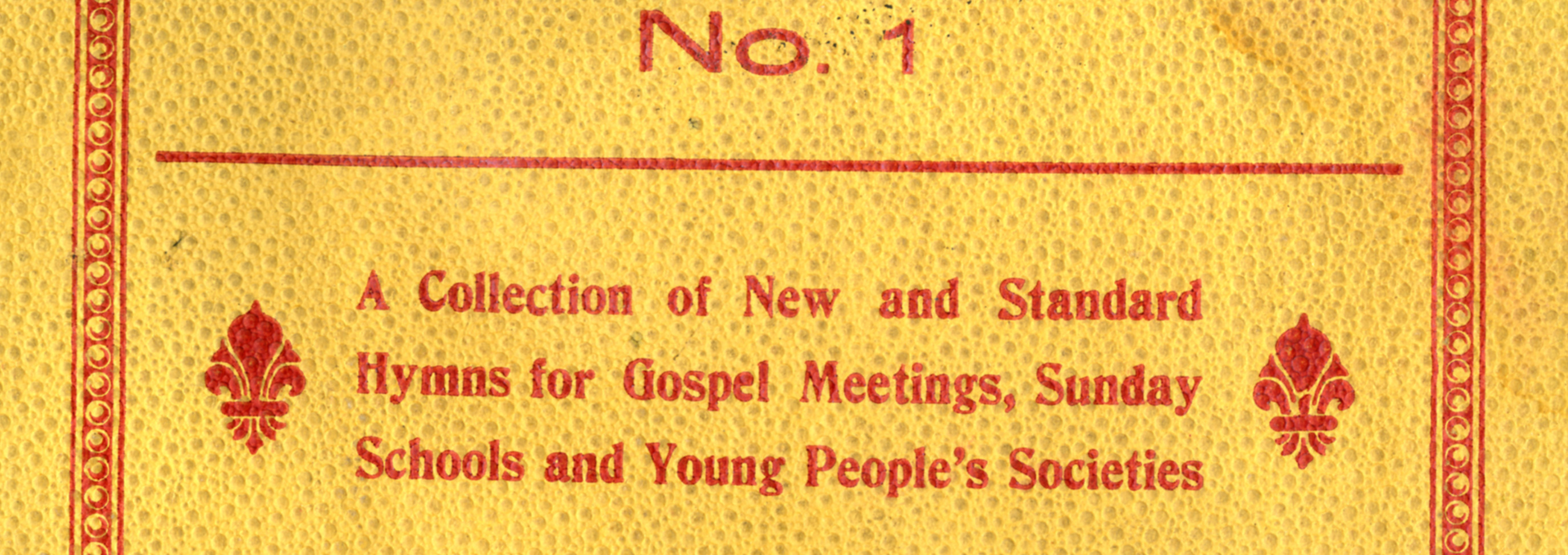
Late nineteenth-century publishers of gospel music produced two main categories of books: hymnals featuring repertoire for devotional contexts and tunebooks including rudiments for music instruction alongside repertoire. Hymnals typically contained primarily standard selections with some newly written or assembled material. These proportions were reversed in the tunebook, which often included a written introduction to musical notation and practice exercises useful for singing school instruction. At the turn of the twentieth century, publishers began printing tunebook repertoire in serials, limiting the theoretical introduction to the first number, spacing installments at intervals of several years, and avoiding repeated repertoire. Serials of this type remained popular into the 1910s. Over time, firms like the James D. Vaughan Publishing Company gradually omitted the theoretical introductions from their catalog’s publications, eventually prioritizing the newly composed music they released in one “annual” collection per year. With the pretense of instruction dropped, gospel annuals were soon marketed to singing schools, normal schools, and conventions whose singers all eagerly anticipated new material.
—Erin Fulton
Alexander's Hymns No. 3
- Author: Charles Alexander
- Published: 1915
- Publisher: Blue Mountains Publishing Company
- Publication City: Philadelphia, Pennsylvania
- Added: Feb. 28, 2020, 7:35 p.m.
Beall's Gospel Songs No. 1
- Author: B. B. Beall
- Published: 1907
- Publisher: B. B. Beall and Company
- Publication City: Douglassville, Georgia
- Added: April 26, 2020, 9:12 p.m.
Gospel Glory
- Author: A. J. Showalter; J. D. Patton; T. B. Mosely; H. M. Eagle; B. B. Beall; K. C. Robinson; W. J. Morris
- Published: 1915
- Publisher: A. J. Showalter Company; Showalter-Patton Company.; Perry Brothers Music Company
- Publication City: Dalton, Georgia; Dallas, Texas; Chattanooga, Tennessee
- Added: Feb. 28, 2020, 9:15 p.m.
New Songs of the Old Faith, No. 1
- Author: Haldor Lillenas, E. W. Petticord, Kenneth Wells, George D. Reep, Henry B. Wallin, C. C. Reinbarger, Jarrette E. Aycock, D. S. Corlett, John E. Moore,…
- Published: 1925
- Publisher: Lillenas Publishing Company
- Publication City: Kansas City, Missouri
- Added: Jan. 28, 2020, 4:44 p.m.
The Eureka Echoes
- Author: Faculty of the Eureka Normal School of Music
- Published: 1903
- Publisher: Eureka Publishing Company
- Publication City: South McAlester, Indian Territory (Oklahoma)
- Added: April 25, 2020, 5:27 p.m.